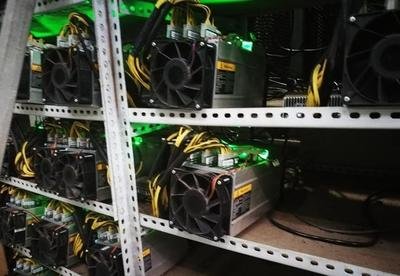The relentless hum of ASIC miners, the blinking LEDs, and the constant churn of algorithms – this is the landscape of Bitcoin mining, a digital gold rush that’s as energy-intensive as it is potentially lucrative. But beneath the surface of hash rates and block rewards lies a complex economic ecosystem where profitability hinges on a delicate balance of factors. This report delves into the top influences shaping Bitcoin mining costs and offers a glimpse into the industry’s future, navigating the volatile currents of cryptocurrency markets and technological advancements.
At the very heart of mining costs lies electricity. The energy-guzzling nature of Bitcoin mining, particularly with power-hungry ASICs, makes electricity prices the single largest operational expense for most miners. Regions with access to cheap and reliable power, often renewable sources like hydropower or geothermal, offer a significant competitive advantage. Fluctuations in electricity rates, driven by seasonal demand or geopolitical events, can dramatically impact profit margins, squeezing out smaller operations and favoring those with robust infrastructure and energy hedging strategies.

Hardware, specifically the mining rig itself, represents a substantial upfront investment. The efficiency of an ASIC miner, measured in joules per terahash (J/TH), directly translates to its energy consumption and profitability. Newer generations of ASICs boast superior efficiency, allowing miners to process more transactions with less power. However, these cutting-edge machines come at a premium, creating a constant pressure to upgrade and stay ahead of the curve. Obsolescence is a real threat; older, less efficient machines can quickly become unprofitable as the network hash rate increases.
The difficulty adjustment mechanism, a core feature of the Bitcoin protocol, plays a crucial role in maintaining a consistent block creation rate. As more miners join the network, the difficulty of solving the cryptographic puzzles increases, requiring more computational power to earn block rewards. This escalating difficulty effectively raises the overall cost of mining, as miners must invest in more powerful hardware or operate existing hardware for longer periods to maintain their share of the rewards.
Beyond operational expenses and hardware investments, other factors contribute to the overall cost of Bitcoin mining. These include cooling infrastructure, essential for preventing overheating and ensuring the longevity of mining equipment. Real estate costs, particularly for large-scale mining farms, can also be significant, especially in areas with limited space and high demand. Furthermore, pool fees, charged by mining pools for coordinating efforts and distributing rewards, represent a recurring cost that miners must factor into their profitability calculations.
The regulatory landscape surrounding cryptocurrency mining is constantly evolving, adding another layer of complexity to the cost equation. Some jurisdictions offer favorable regulatory environments, attracting miners with tax incentives and clear legal frameworks. Others impose stricter regulations, potentially increasing compliance costs and limiting mining operations. The uncertainty surrounding future regulations remains a significant concern for miners, forcing them to carefully assess the long-term viability of their investments.
The price of Bitcoin itself is, of course, the ultimate driver of mining profitability. When Bitcoin prices soar, mining becomes significantly more lucrative, attracting new entrants and driving up the hash rate. Conversely, when prices plummet, many miners face losses and may be forced to shut down their operations. This price volatility creates a boom-and-bust cycle in the mining industry, rewarding those with the foresight and resilience to weather the storms.

Looking ahead, the future of Bitcoin mining costs will be shaped by several key trends. Advancements in ASIC technology will continue to drive efficiency improvements, potentially reducing energy consumption and lowering operating costs. The growing adoption of renewable energy sources will further mitigate the impact of electricity prices, making mining more sustainable and environmentally friendly. The evolution of Bitcoin’s scaling solutions, such as the Lightning Network, could also impact mining rewards and transaction fees, potentially altering the economic incentives for miners.
Furthermore, the emergence of new mining technologies, such as immersion cooling and alternative consensus mechanisms, could disrupt the traditional mining landscape and create new opportunities for innovation. As the cryptocurrency industry matures, we can expect to see greater consolidation among mining operations, with larger, more sophisticated players dominating the market. Ultimately, the ability to adapt to changing market conditions, embrace technological advancements, and navigate the evolving regulatory landscape will determine the long-term success of Bitcoin miners.
In conclusion, the cost of Bitcoin mining is a multifaceted equation influenced by a complex interplay of factors, from electricity prices and hardware investments to network difficulty and regulatory environments. While the inherent volatility of the cryptocurrency market presents ongoing challenges, the relentless pursuit of efficiency, sustainability, and innovation will continue to shape the future of this dynamic industry.







One response to “Top Factors Affecting Bitcoin Mining Costs: An Industry Forecast Report”
Mining costs hinge on electricity prices, hardware efficiency, and network difficulty. This report forecasts escalating competition and potential profitability squeezes, urging miners to optimize strategies or face obsolescence.